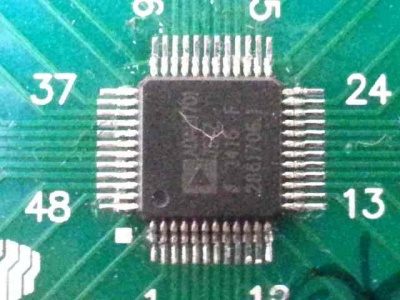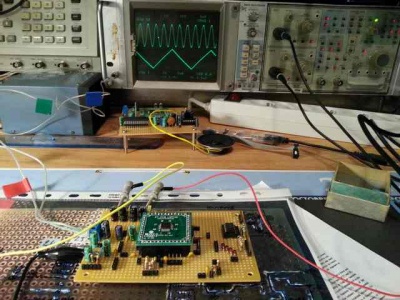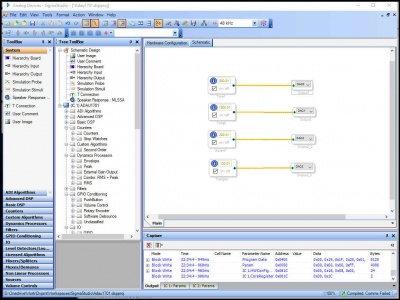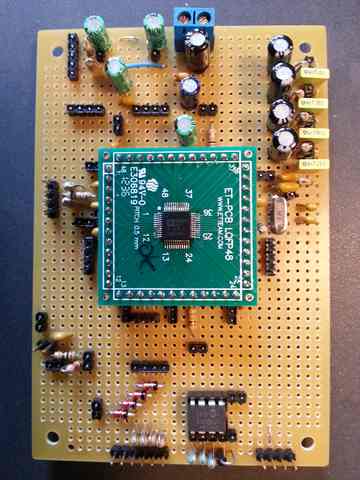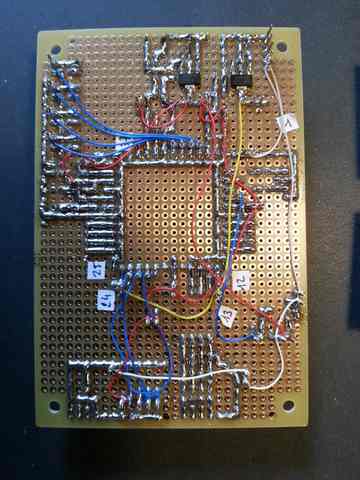Quoi de neuf 2016
From Eric
(Difference between revisions)
m |
m |
||
| Line 8: | Line 8: | ||
*[8/5/2016] | *[8/5/2016] | ||
** I have completed my ESP8266 board: now, I can control 4 relays from my phone... I use : a MQTT broker running on my laptop (it could run on my RPi as well), a MQTT client running on the ESP (using NodeMCU), a MQTT client running on my phone. The small LUA script running on the ESP subscribes to the relay control message and switch the GPIOs accordingly. I have added a small buzzer for the fun. Here is a [https://youtu.be/kVONiTWmnl8 small demonstration video]. | ** I have completed my ESP8266 board: now, I can control 4 relays from my phone... I use : a MQTT broker running on my laptop (it could run on my RPi as well), a MQTT client running on the ESP (using NodeMCU), a MQTT client running on my phone. The small LUA script running on the ESP subscribes to the relay control message and switch the GPIOs accordingly. I have added a small buzzer for the fun. Here is a [https://youtu.be/kVONiTWmnl8 small demonstration video]. | ||
| - | ** I have assembled a small line-following robot kit (sold by Banggood for around 5€). My son lend me a hand to solder the components. It works pretty well: a very nice present for a child. Here is a picture of the thing:. A short video showing the robot can be found [here]. | + | ** I have assembled a small line-following robot kit (sold by Banggood for around 5€). My son lend me a hand to solder the components. It works pretty well: a very nice present for a child. Here is a picture of the thing:. A short video showing the robot can be found [here https://youtu.be/thMx-adAF3U]. |
* [6/5/2016] | * [6/5/2016] | ||
** From the ESP-01 to the ESP-12... The ESP-12 version of the ESP8266 board provides much more IOs than the ESP-01. The ESP-12 alone (i.e., without any microcontroller aside) can manage both the WiFi communications *** and *** the physical inputs and outputs. Fortunately, I had two pieces of this ESP-12e at hand...[[File:esp8266_esp12e_board.jpg|400px|thumb|none]] | ** From the ESP-01 to the ESP-12... The ESP-12 version of the ESP8266 board provides much more IOs than the ESP-01. The ESP-12 alone (i.e., without any microcontroller aside) can manage both the WiFi communications *** and *** the physical inputs and outputs. Fortunately, I had two pieces of this ESP-12e at hand...[[File:esp8266_esp12e_board.jpg|400px|thumb|none]] | ||
Revision as of 17:42, 8 May 2016
Experiments carried out in the past (from 2011) are described hereafter:
Contents |
May 2016
- [8/5/2016]
- I have completed my ESP8266 board: now, I can control 4 relays from my phone... I use : a MQTT broker running on my laptop (it could run on my RPi as well), a MQTT client running on the ESP (using NodeMCU), a MQTT client running on my phone. The small LUA script running on the ESP subscribes to the relay control message and switch the GPIOs accordingly. I have added a small buzzer for the fun. Here is a small demonstration video.
- I have assembled a small line-following robot kit (sold by Banggood for around 5€). My son lend me a hand to solder the components. It works pretty well: a very nice present for a child. Here is a picture of the thing:. A short video showing the robot can be found [here https://youtu.be/thMx-adAF3U].
- [6/5/2016]
- From the ESP-01 to the ESP-12... The ESP-12 version of the ESP8266 board provides much more IOs than the ESP-01. The ESP-12 alone (i.e., without any microcontroller aside) can manage both the WiFi communications *** and *** the physical inputs and outputs. Fortunately, I had two pieces of this ESP-12e at hand...
- I have updated the ESP8266 page accordingly. Note that on the ESP-12e, GPIO15 must be tied to GND !!! (By the way, don't forget to use a resistor to pull the pin down, just in case...)
- [1/5/2016]
- I have continued my experiments with the ESP8266. I have played a little bit with the MQTT protocol and the ESP (see the ESP page). MQTT is a nice and simple publish/subscribe protocol; a kind of very light DDS. Now, I can publish a "topic" on my ESP and subscribe to the same topic on my Raspberry (which also serves as a MQTT broker). For the moment, I use the NodeMCU ESP firmware which provides a Lua interpreter on the ESP. With this configuration, everything works out of the box and establishing a connection to the MQTT broker though a WiFio connection is a piece of cake. The next step will be to use the Xtensa C cross-compiler to build the application from C code. This is for the fun because I think that there is sufficient room on the NodeMcu to implement the kind of IoT-application in Lua...
- I have bought a nice 320x140 LCD display for the Raspberry (around 12€ at Banggood). Hopefully, I found all the necessary explanations on the web to set it up.
April 2016
- [16/04/2016] First experiment with the ESP8266. First step was to connect the chip to my PC and use the AT commands. It works pretty well as long as you use an appropriate power supply: WiFi requires quite a lot of current; the first power supply is used was too weak.
- There is quite a lot of information about the ESP8266 available on the net. I have capture the most interesting parts (as of today) on the dedicated ESP8266 page.
- Slight improvement of the ADAU1701 board. Some details are given here. A short (and useless) video is available here.
March 2016
- Yes! I have managed to solder my 0.5 pitch ADAU1701 using my brand new hot-air soldering station. The result is pretty good even though I had to remove a few solder bridges. Here it is:
- I have also completed the board that hosts the ADAU1701 DSP and... it works pretty well. Here is a picture of the DSP generating sinusoidal and triangular waveforms:
- Here is the board (a slightly simplified version of Elektor's design or a slightly more complex design of AD's datasheet):
- You will (soon) find a few information on the ADU1701 in a dedicated page.
February 2016
- I have bought a cheap frequency generator (Feeltech FY3200S) and a hot-air soldering station (Aoyue int 852):
- I have managed to solder a 0.8 TQFP64 chip (an Atmega 128) using hot air. The result is pretty nice event though I had to remove 4 bridges. This success came after a first trial (with the same type of chip) which ended badly: one dead Atmega and a lost TQFP adapter.
- The key to success was:
- to solder at 350°C (I guess that this is slightly higher than actually necessary)
- to place the chip on the board, stick it with some Kapton tape, and then
- to put as little as possible soldering paste. (I think that putting the paste once the chip is in place prevents it migrating behing the pins where it could create short circuits. Well, it could possibly be removed afterwards using alcohol or aceton...)
- to use a medium nozzle (i.e., not the smallest)
- to remove the remaining bridges between pins using some desoldering wick and a large soldering tip (and not my Hakko-clone with its tiny tip).
- Here is the result: not too bad... This was a test run before I receive my tiny ADAU1701 (with a 0.5 pitch).
It took me more time than when I use my soldering iron but the result is nicer.
January 2016
- After watching this very interesting video about the Gilbert cell, I have built the following mixer (the schematics comes from the video)
- As I have used non matched transistors, the mixing is not as symetric as it should be !

